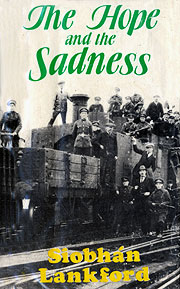
Siobhan Lankford's story is an absorbing piece of personal reminiscence, a valuable insight into a lost rural culture and a fresh perspective at local level of the revolutionary period, 1916-23.
The author's account of her childhood on a small farm in north Cork at the turn of the century re-creates in vivid, authentic and anecdotal detail a way of life long since vanished; similarly, she weaves the tapestry of small-town Ireland at a slightly later date, as she recounts her experiences in Mallow and finally, she adds informative and valuable uetail to our knowledge of events after 1916. when she participated in the National Struggle as an IRA intelligence officer.
Her intelligence work had her in constant communication with Tomas MacCurtain, Liam Lynch, Sean O'Tuama and many others. We are given important details - many of which have not been published before - of military actions, personal relationships and, above all, of the day-to-day working of the intelligence network in north Cork.
Through it all, the author's personality is revealed as extremely observant and independent, and her style is simplicity and freshness itself; every word rings true.
The author was born in 1894, the first child of Patrick and Mary Creedon of Mourne Abbey, County Cork. Her childhood was coloured by tales of famine times, the Fenians and of Land League strug-gles. At the outbreak of the First World War Siobhan was working in the Mallow post office; she became involved with the Gaelic League and, in the aftermath of 1916, she joined the IRA as an intelligence officer. Subsequently, she was dismissed from her position in the post office because of her intelligence work. She and Seamus Lankford were married in 1932.
The photograph on the dust-jacket shows a Free State armoured train in Mallow station during the Civil War.